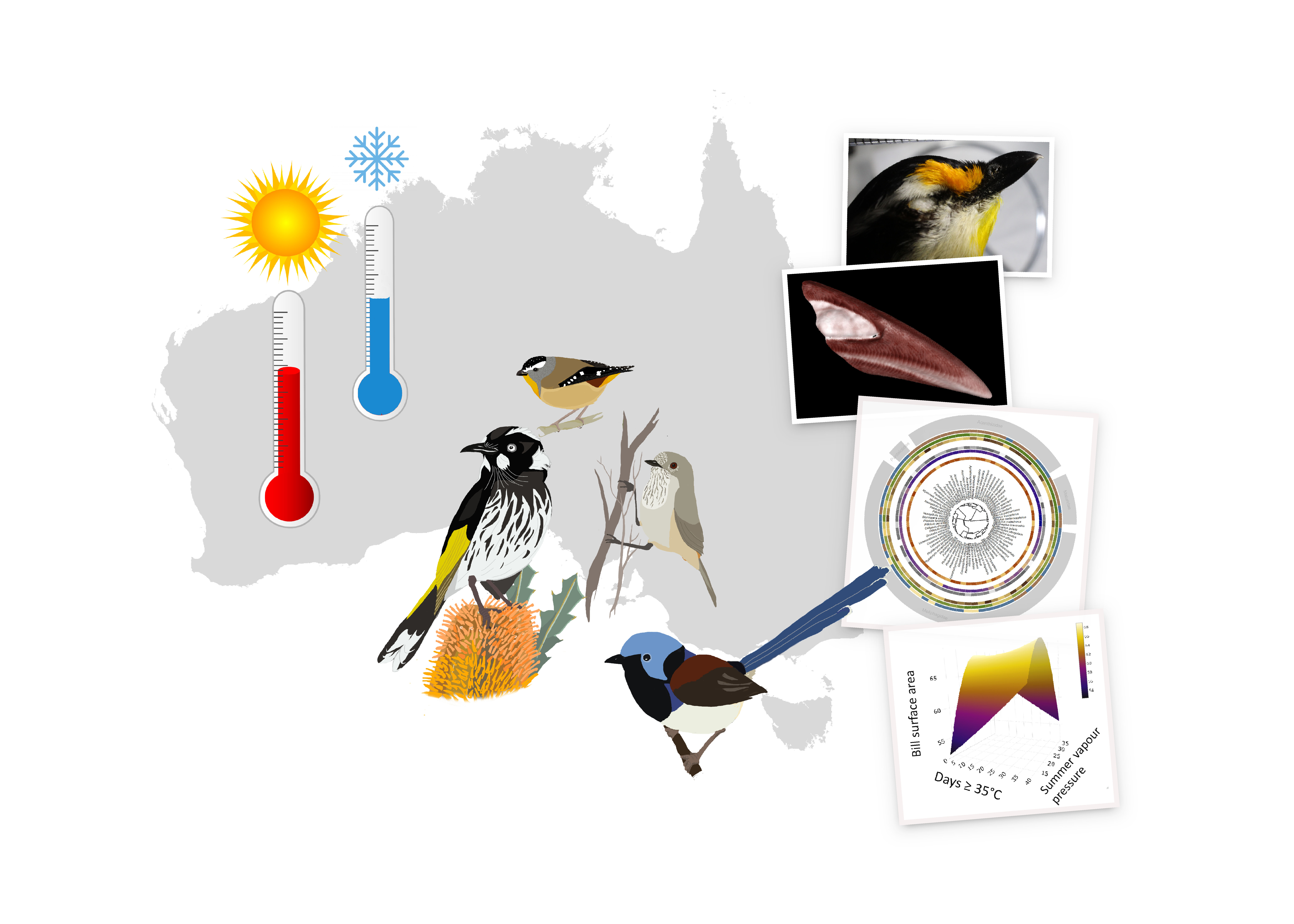E&E PhD Exit Seminar: Avian morphometrics and climate change
Climate has changed rapidly since the end of 19thcentury due to increased emission of greenhouse gases into the earth’s atmosphere.
Speakers
Event series
Content navigation
Description

Climate has changed rapidly since the end of 19thcentury due to increased emission of greenhouse gases into the earth’s atmosphere. These changes have resulted in species changing their distributions and their phenology (the timing of life events such as breeding and migration). Recent studies have also demonstrated that climate change underlies changes to several morphological traits in endotherms. Climate related variations in morphological traits across geographic space have long been recognized. For instance, Bergman’s and Allen’s rule describe latitudinal patterns in morphological traits; larger body sizes and smaller appendage sizes relative to body size in colder, higher latitudes. One explanation for these rules is based on the heat exchange capacity of the trait and its adaptiveness to the thermal environment. These trait size patterns across geographic space and their associations with temperature have led to the prediction that morphological traits will change as the climate warms. More specifically, body size is predicted to decrease and appendage size relative to body size is predicted to increase. Physiological and field-based studies indicate that temperature extremes influence the thermal performance of particular endotherm traits. However, most studies do not test for associations between the frequency and extent of temperature extremes and trait change, rather focusing on the influence of average temperature instead, thereby missing important potential drivers. Further, it has been shown that ambient conditions other than temperature, such as humidity and rainfall, are likely to influence thermoregulatory costs. In my PhD, I studied variation in avian bill size in response to recent changes in climate using the members of largest group of Australasian passerines, the Meliphagides, and investigated whether the responses align with predictions based on known latitudinal patterns in morphological traits. I also explored whether recent changes in landscape acted synergistically or antagonistically with climate change to influence bill size modification. Finally, I tested whether it is possible to predict morphological responses to climate change based on a species’ ecology and life history. In this seminar, I will present my findings and discuss how they expand our understanding of the responses of endotherms to climate change.
Location
Please note: this seminar will be held in the Eucalyptus Rm and via Zoom, details are included below.
Eucalyptus Room, Rm S205, Level 2, RN Robertson Building (46)
Please click the link below to join the webinar:
https://anu.zoom.us/j/83280730308?pwd=MkZjV1dIZndjUEMvSXVYRHVaU0czdz09
Passcode: 449937
Canberra time: please check your local time & date if you are watching from elsewhere.

